Why Salary Isn't the Primary Driver of Employee Satisfaction and Loyalty

How often have you heard stories of people who were unhappy with their salary but still decided to stay with the company because they value more than money? And what about those who stayed even though the organization was going through some tough times?
The truth is that people are ultimately most happy at work when they are treated with respect, valued for their contributions, and believed to be part of a team that is committed to its customers and its stakeholders. As a result, their commitment to the organization is likely to be high. This article will discuss if the salary is the Primary Driver of Employee Satisfaction and Loyalty!
Is Salary Primary Driver of Employee Satisfaction and Loyalty?
Broadly speaking, people don't economically benefit from staying with a company unless they get to do something they value and find meaningful. The salary is only one element of their overall compensation package, with other elements such as promotions, bonuses, and stock options also important. Still, the salary is often seen as the biggest driver of people's satisfaction with their work.
Recent research, however, has shown that satisfaction with the salary has started to decline in recent years. People are much more interested in their career path than ever before and want to learn new skills and take on bigger challenges. They have even turned to the Internet and social media for career advice.
Most importantly, these studies contradict the idea that money and salary satisfaction should have a direct correlation. In fact, the experience that some executives believe causes employees' unhappiness is usually found in the workplace culture. It can include factors related to the type of work, the relationship with the supervisor, or whether they feel valued.
When people say they are unhappy with their salary or dissatisfied with their earnings, they point to a lack of recognition. It is generally because the salary is an important factor in how people value their work and decide if they are working for a good company or not.
For example, if an organization has money issues, the people in that organization can signal a problem through low salaries. They may silently leave the company through resignation, compensation control, or other forms of passive resistance. Depending on the organization, this can occur in an apparent or subtle way.
What is the Primary Driver of Employee Satisfaction and Loyalty?
The salary is not the primary driver of employee satisfaction and loyalty. There are other factors that play a more significant role than money. For example, the company's benefits can be important to employees, especially if they find their work challenging, meaningful, and fun. They may also be interested in their careers, their relationships with their supervisors, and other factors related to the work environment.
Besides that, companies that treat employees like a family, with a sense of commitment to each other and their customers, have seen higher employee satisfaction. One firm, for example, uses a "love-at-work" policy that is designed to create a positive work environment. This type of organization promotes and values the different needs of its employees and treats them like family members. It is how the organization has been able to build a strong culture that resonates with its employees. Here is the Primary Driver of Employee Satisfaction and Loyalty.
#1. Company vision and values
The culture is driven by the vision and values of the organization: this is crucial to employee loyalty. An organization that doesn't have a clear vision or value will find it hard to attract and retain employees who share its core principles. To build a strong culture, an organization has to have clear and consistent values that are communicated to all employees so that they can work towards achieving the same goals.
#2. Career opportunities
A career is a sequence of jobs that build on top of each other. It's more than just job security and consistent financial rewards. And if an organization doesn't provide its employees with career opportunities, chances are they will be unhappy and leave for another company that offers better prospects. So, companies that invest in the hiring and development of their employees have a better chance of retaining them.
#3. Promotions and rewards
Promotions and rewards should also be part of the package of incentives. An employee may strongly desire to move up in the company if they are given more opportunities to learn and grow while they are there. The more choices they have, the more motivated they might be to stay with the company.
Many people don't see money or benefits as driving factors in employee satisfaction. Besides that, promotions and rewards can vary from one organization to the next. Most employees are driven by a sense of achievement, which can be granted through promotions, bonuses, or other forms of recognition.
#4. Respect and commitment
People want to be respected as employees and as individuals. They also want to believe that they are part of a team that is committed to its customers and its stakeholders. That's why organizations should build cultures based on trust, transparency, and ethical behavior. Although money can be a part of an employee's loyalty, it usually comes from the respect they feel from the company. If an employee doesn't feel respected or valued, they will leave for another company that provides them with what they want.
#5. Employee engagement
An engaged workforce is crucial to the success of any company. They are more likely to put in extra effort for the company, solve problems and provide ideas. Money can also be a driver for employee engagement, but it usually comes from the opportunity of learning new things and developing their skills and abilities.
Engagement is an attitude that all employees have towards their work and their organization. The best way to engage employees is to have a clear vision and mission. As a result, employees will feel committed to the company and want to achieve its goals.
#6. Employee happiness and participation
Happy employees are productive employees. They have a positive attitude and make the workplace a better place. If a company actively involves its employees in decision-making, they feel more motivated and committed to their work.
Organizations with high engagement have a happier, better-functioning, and more responsive workforce. It makes their employees happy. Also, this type of organization has an active and engaged workforce that will contribute to the bottom line through their productivity.
#7. Employee ownership and participation
Employee ownership and participation contribute to employee engagement and loyalty. As a result, the organization will attract and retain employees that share the same values. Higher employee ownership is associated with fewer absenteeism, low staff turnover, and higher morale.
An example of employee ownership is giving every employee stock options to gain financial security. It can be a positive factor that adds value to the company, but it doesn't have to be tied to money. A company can also give its employee's ownership equity, which gives them more control over the decisions that are made on their behalf.
#8. Employee recognition
By rewarding the right behavior and setting targets that are achieved, an organization can encourage employee loyalty and recognition. As a result, they will be more productive and happy. An example is awarding employees with a bonus based on their output or performance. Companies can also boost employee loyalty by recognizing the efforts of their employees. It can be done through promotions and other forms of rewards. It is a way to show employees that they matter, making them feel valued and appreciated.
#9. Work-life balance
There are many different factors that contribute to work-life balance. It involves the organization, culture, and environment where people work, live, and play. Work-life balance can be positive or negative depending on the individual who experiences it.
Work-life balance is a core value of most companies. It's a way to make employees feel valued and respected to allow them to concentrate on their personal lives. It is also a factor that motivates them, so they are willing to put in extra hours.
#10. Work-life balance tools
A tool that can help employees get a better work-life balance is tracking their time, which allows them to keep track of how they spend their time at work. It helps them see how they are using their time and makes them aware of what they need to have more or less sleep. Technology can play an important role in helping workers manage their work-life balance. For example, a device, software, or program that lets employees track their time can help them ensure they are spending enough time with their families.
#11. Flexible work arrangements
Flexible work arrangements are important to the success of today's organizations. A flexible work schedule can help employees have a better balance between their professional and personal life to have a more balanced life. Having a flexible schedule will also help improve employee morale and well-being.
Another way to help employees manage a healthy work-life balance is to provide flexible work arrangements, such as telecommuting. It can allow an employee to receive more personal time while still being able to contribute meaningfully to their organization.
#12. Employee assistance programs
An employee assistance program (EAP) is an organization that provides confidential, professionally-delivered help in the areas of mental, physical, and emotional health. Employers usually pay a small fee or have a specific plan in place to cover the cost of the EAP. The benefit of an EAP is its ability to help employees have a better life balance.
The organization benefits from the EAP because it lowers the costs of providing health care and improves employee retention. An employee assistance program can help employees cope with any personal problems, such as a divorce or a death in the family. It may also be linked to other work-life balance tools, like flexible work arrangements and time-tracking devices.
#13. Technology and employee engagement
Technology has changed the way we communicate, work and play. For this reason, it has affected employee engagement as well. According to many studies, social media is a good way to engage employees in an organization.
Technology is a major tool that organizations use to engage their workforce. It can include programs that evaluate the value of the work done by employees. It can also include tools for time-tracking, which can be used to evaluate productivity. If an employee feels that he or she gets a fair and accurate evaluation of their work, they will be more motivated to do it.
#14. Diversity and inclusion
Diversity and inclusion are important to the success of any organization. It helps to make every person feel that he or she matters and is important. Organizations with a diverse workforce will not only improve the business but can also make employees more productive.
Diversity and inclusion are important because they allow an organization to tap into all employees' collective wisdom and experiences. It enhances employee engagement and also helps with the recruitment process. Diverse organizations tend to be more successful, so it's a win-win strategy for employers.
#15. Flexibility
According to some sources, this type of program will help employees achieve more flexibility in their work. It will improve their work-life balance and make them more productive at work. Some of these programs include flex-time, telecommuting, part-time work, and job sharing.
Flexible scheduling is one way to help people achieve better work-life balance and more happiness. Flexibility is achieved by giving employees the ability to work anytime, anywhere. It can be a benefit for the organization because it will help them improve the business and increase brand awareness.
Parting Words:
When it comes to employee satisfaction, pay generally takes a backseat to other factors. A solid work-life balance and opportunities for personal growth are much more important. In fact, some companies have found that they need to pay employees less in order to maintain a high level of satisfaction. The key is to offer employees a challenging, high-impact job that provides plenty of growth and advancement opportunities. It will keep them motivated, happy and productive while also allowing them time to relax and enjoy their lives outside of work.
Do you feel like you are struggling with putting "strategy" and "business growth concepts" in place that make a difference? Doing it all is overwhelming! Let’s have a honest discussion about your business and see if the Power of 10 can help you. Click “HERE” to have a great conversation with our team today.
Written and Published By The Strategic Advisor Board Team
C. 2017-2021 Strategic Advisor Board / M&C All Rights Reserved
www.strategicadvisorboard.com / info@strategicadvisorboard.com











